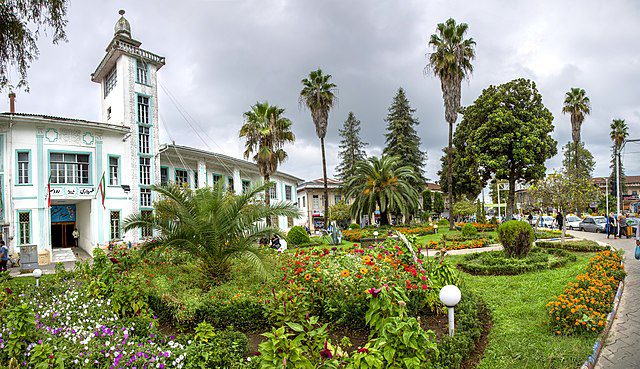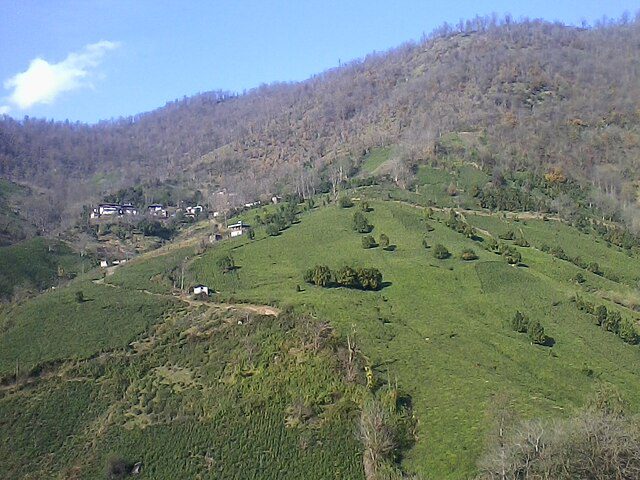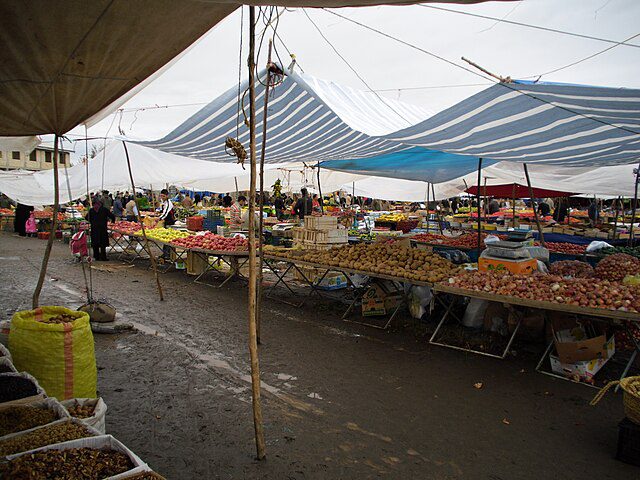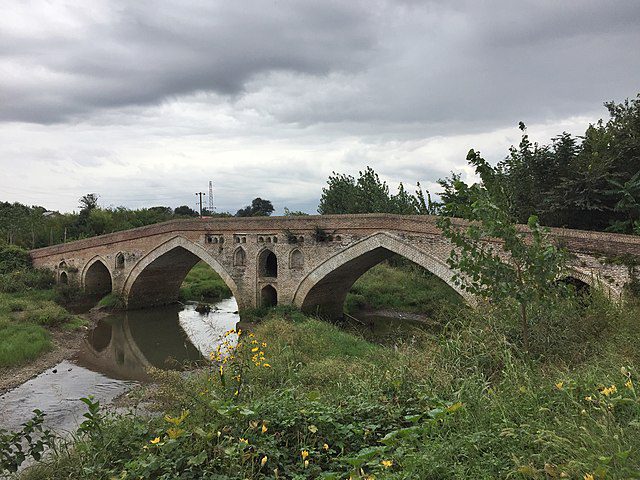Table of Contents
Rudsar, a charming city in Gilan province, attracts tourists with its pleasant weather and beautiful natural surroundings. Situated to the south of the Caspian Sea, it’s known for its picturesque plain. In the past, it used to be called “Koutum” and later “Hoosem.” Back then, it was a lively city with a busy market and a grand mosque.
As time went by, the city faced various challenges and transformations. In the 8th century AH, it was reconstructed by Seyed Reza Kiya, and that’s when it got its current name. His efforts not only brought the city back to life but also added to its historical significance. Today, the rich history and natural beauty of here make it a magnet for many tourists who are drawn in by its charm.
You can explore its lovely landscapes, including the serene coast of the Caspian Sea and the lush green hills that surround the city. The city’s history is still visible in its well-preserved buildings and cultural heritage. As you wander through the streets, you can feel the calmness of this hidden gem and discover the stories and traditions that have made here such an enchanting place. Whether you’re into history, nature, or just enjoying a day by the sea, the city offers something special for every visitor.
Location of Rudsar

Rudsar Gilan is situated right on the Caspian Sea, with its lush coastal plain and a climate that’s just right. It’s about 326 kilometers (or 203 miles) away from Tehran, making it a great escape from the busy city.
This peaceful spot, where the sea and the land come together, offers both the beauty of nature and the convenience of being close to the capital. The city invites you to experience the tranquility of life by the Caspian Sea.
The blend of nature, culture, and adventure makes here an alluring spot for those seeking a peaceful escape with a touch of excitement. So whether you’re looking for relaxation or a bit of exploration, the city has something to offer everyone.
Etymology of Rudsar
Rudsar, a name with Persian roots, reflects its geography aptly. “Rud” in Persian means river, and “sar” translates to head. It’s a fitting name, given that rivers gracefully flow along each side of the city.
Yet, the story of Rudsar’s name is just a part of the city’s fascinating history. Ancient records show that the city was once called “Koutum,” a small city in Rankooh. At another time, it bore the name “Hoosem,” boasting a bustling marketplace and a grand mosque around 375 AH. However, history is a mixture of ups and downs, and the city faced difficulties, falling into disrepair for reasons lost to time. It was only through the dedicated efforts of Seyed Reza Kiya, between the years 789 and 831 AH, that the city was lovingly rebuilt, breathing new life into the city.
The passage of time also includes chapters on external influence. In the early 1900s, the city, like the rest of northern Iran, was occupied by Russian forces, witnessing the winds of change that swept through the region. The city’s history is a testament to strength and renewal, shaped by the flow of time and the impact of both local and global forces.
Rudsar Climate

The climate in Rudsar also plays a significant role in the local way of life. With such moderate weather, the city has developed a rich agricultural tradition. You’ll find thriving tea plantations and rice fields in the surrounding areas, which not only contribute to the city’s economy but also add to its natural beauty.
Moreover, the local cuisine is heavily influenced by the climate. Seafood dishes are abundant, featuring freshly caught fish and prawns. And during the cooler months, hearty stews and warm beverages like herbal teas become a comforting staple for residents and visitors alike.
This connection between the climate, agriculture, and culinary traditions adds an extra layer of depth to the city experience, making it a destination that engages all your senses.
Economy of Rudsar

In Rudsar, the local economy thrives on two timeless pillars: farming and fishing. The region is renowned for its rice fields, tea plantations, citrus orchards, and silk production. These crops not only sustain the local population but also find their way to tables worldwide, bearing the rich flavors of the fertile land.
Amidst the picturesque backdrop of the Caspian Sea, fishing remains a steadfast tradition. Skilled fishermen cast their nets, providing a source of income deeply rooted in heritage. With rice, tea, citrus fruits, and silk, the city’s economy remains steadfast, bridging the past and present, and making its mark in the global marketplace.
Things to Do in Rudsar
Rudsar, a lovely town in Iran by the beautiful Caspian Sea, is a great place for travelers who want to see nature and culture. The city is wonderful, but there are also many exciting things to do nearby. Let’s explore two of the best things to see here. Each one is unique and memorable.
Milash Waterfall: A Natural Wonder
Nestled in the beautiful Rudsar landscape, the Milash Waterfall is a true gift from nature. Apart from Rudsar Beach as one of the best beaches of Iran, to reach this hidden gem, follow the winding paths through the lush forests. As you get closer, the sound of the falling water grows louder.
When you arrive at Milash Waterfall, it’s like entering a peaceful paradise. It’s a perfect place to enjoy the beauty of untouched nature and cool off on a hot day. You can take a refreshing swim in the clear waters and have a relaxing picnic in the nearby woods. Milash Waterfall is a place where you can forget about time and let go of your worries.
Javaherdasht Village: A Taste of Tradition
Located in the serene Rudsar region, Javaherdasht Village is a step back in time, where you can experience local customs and rural life. Stroll through the village’s charming stone streets and soak in its old-fashioned charm.
Connect with the friendly locals and enjoy some traditional Persian tea or Iranian Cuisine. Javaherdasht Village has a rich cultural history, with historic mosques and traditional houses to explore. If you happen to visit during a local festival, you’ll witness lively celebrations that bring the community together. This quaint village invites you to experience the past while connecting with the present.
Where to Eat in Rudsar
When you are here, Talaar Restaurant is your ticket to a flavorful journey, where the scent of saffron-infused rice and juicy kebabs fills the air. Don’t miss the “Talaar Special Kebab” – a must-try delight. Me Shef Restaurant, on the other hand, combines tradition and innovation, offering both classic dishes and modern interpretations of Persian cuisine. And if you’re craving something different, Pizza Hot serves up delicious pizzas with a global twist in a cozy local setting. The city has a little something for every palate from top Iranian foods.
Where to Stay in Rudsar
Bahar Hotel and Toranj Hotel in Rudsar offer peaceful escapes with beautiful sea views. At Bahar, you’ll find cozy rooms, a garden retreat, and delicious food, all near the Caspian Sea. Toranj Hotel, nestled by the sea, provides elegant rooms and tranquil beachside moments. Both let you relax, soak in the scenery, and savor the calm of the coastal charm.
FAQs about Rudsar
Q1: What is the history of Rudsar’s name and how did it change over time?
A1: Rudsar, originally known as “Koutum” in ancient records, later bore the name “Hoosem.” The city faced challenges and was renamed “Rudsar” in the 8th century AH, thanks to the efforts of Seyed Reza Kiya.
Q2: Where is Rudsar located, and how far is it from Tehran?
A2: Rudsar is located on the Caspian Sea, approximately 326 kilometers (203 miles) away from Tehran, providing a peaceful escape from the bustling city.
Q3: What is the climate like in Rudsar throughout the year?
A3: Rudsar offers a pleasant climate year-round. Summers are warm and somewhat humid, ideal for outdoor activities. Winters are cooler and occasionally damp, creating a cozy atmosphere with misty mornings and snug evenings.
Q4: What are the primary economic activities in Rudsar?
A4: The local economy in Rudsar relies on farming and fishing. The region is known for rice fields, tea plantations, citrus orchards, and silk production. Fishing in the Caspian Sea is also a significant tradition, contributing to the city’s economy.
Q5: How has external influence, such as the Russian occupation in the early 1900s, impacted Rudsar’s history?
A5: Rudsar, like other parts of northern Iran, was occupied by Russian forces in the early 1900s, witnessing regional changes. This external influence is a part of history, showcasing the city’s resilience and adaptability over time.
Last Words: Discover the Best of Rudsar with Customized Iran Tours
Rudsar, a pretty city in Gilan province, invites tourists with its nice weather and nature. Located south of the Caspian Sea, it used to be called “Koutum” and later “Hoosem.” It was a busy city with a big market and mosque, but it had some problems and was rebuilt in the 8th century AH by Seyed Reza Kiya, getting its current name. Today, the history and natural beauty of the city keep drawing many visitors who are charmed by its beauty.
If you’re eager to explore the enchanting destination of Rudsar, Iran, it’s essential to consider the benefits of traveling with a customized and tailored tour. Embark on an adventure like no other with To Iran Tour‘s Customized Tours, where every moment is designed to reflect your unique preferences and interests. When it comes to experiencing Iran’s hidden treasures, rich traditions, and breathtaking landscapes, To Iran Tour is your ideal partner.
Iran awaits, and we’re here to help you discover its wonders in the most personalized and memorable way.

